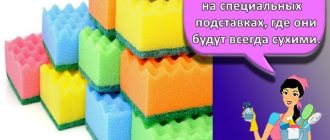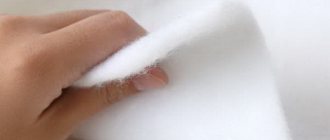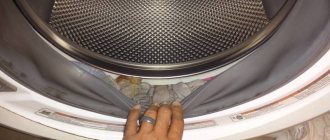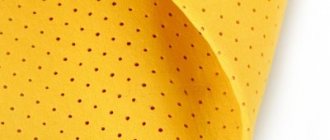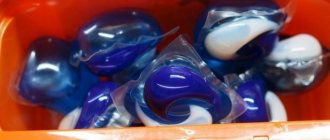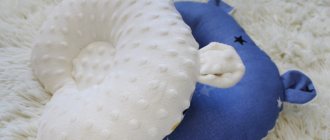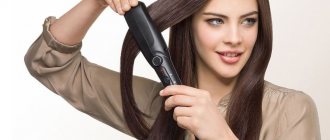A pair of fabric garments that do not reach to the knee, designed to be worn on a person's legs. One of the most common items of clothing that is used every day. Socks are an important hygiene item. They are not only used to prevent shoes from wearing out, but also to keep feet warm during the cold season.
“In ancient times, socks were made from leather or matted animal hair. At the end of the 16th century, machine knitted socks appeared. Since the beginning of the 19th century, machine knitting has become the predominant method in the manufacture of socks.” Wikipedia
Composition of socks
Today, socks can contain both natural and synthetic fibers. Cotton, linen, silk and wool are used as natural materials. Lycra and polyamide fibers are used from synthetics. There are also mixed options when artificial materials are added to natural materials. This gives the product elasticity and durability.
Materials used in production
Cotton soft - Thin, smooth, soft thread. Products made from cotton yarn are hygienic, hygroscopic, breathable, light and temperature resistant. In terms of strength and abrasion resistance, cotton yarn is inferior to linen or silk, but superior to wool. Disadvantages include its low elasticity (therefore, the products wrinkle easily) and tendency to shrink. Cotton yarn is not elastic, which is why it is often mixed with synthetic fibers.
Mercerized Cotton - Cotton that has been treated with sodium hydroxide solution while stretching the fiber. Compared to regular ones, it is more durable, paints better and has a slight shine. After processing, it becomes a higher grade than regular cotton. Products made from it are considered elite. Ideal to wear with classic shoes.
Cotton BIOFIL - Is the latest development of the leading Italian yarn manufacturer -. The raw material for this yarn is 100% organic biore cotton, the quality of which is guaranteed by European standards. This cotton is grown in environmentally friendly areas without the use of pesticides and chemical fertilizers and without the use of genetic manipulation. Biofil is collected by hand and is an environmentally friendly product. Yarn is dyed without the use of carcinogens and substances that cause irritation and allergic reactions. Biofil cotton is therefore hypoallergenic and is especially suitable for people with sensitive skin and children.
Wool - The term “wool” traditionally refers to the wool of sheep. Due to its origin, wool yarn retains heat better than vegetable yarn, gets wet less, is more elastic, and is highly hygroscopic. The tensile strength of wool fibers is lower than that of plant fibers, however, due to their high elasticity, they can return to their original dimensions, so wool yarn is characterized by high wear resistance. Serious disadvantages of wool yarn include its matting and the formation of pellets on it during friction (pilling). Moreover, the weaker the yarn is twisted, the more pronounced the deficiency is. In order to give the yarn other positive characteristics, such as strength and dimensional stability, artificial or plant fiber is added to wool yarn.
Merino Wool - Wool from fine-wooled Merino sheep with long, fine fibers. Yarn made from such wool is thin, light, durable, highly hygroscopic and elastic, which gives the product dimensional stability. This yarn is quite expensive and has the largest number of gradations in quality and price, in addition to the “regular” one:
- Very fine wool – “Extra-fine”
- Fine wool – “Super-fine”
Angora - Very fluffy, soft and warm wool made from the down of Angora rabbits. In its pure form it is also practically not used due to its high cost and excessive softness, and is found mainly in blended yarns, which are perfect for winter clothes, light, warm and fluffy. The main disadvantage: angora-containing items are heavily peeled ("pellets" form)
Cashmere - Very fine down from the undercoat of Tibetan goats. Cashmere yarn and products are pleasant to the touch, very light, warm and soft. Cashmere is considered the best wool fiber, and products made from it are elegant and emphasize the high status of the owner.
Bamboo is a type of viscose for which bamboo wood was taken as the raw material. Bamboo fiber is softer than cotton and has a silk-like quality. It is very durable and has good wear resistance. In addition, bamboo fibers have a porous structure, due to which the fibers can instantly absorb moisture, that is, they are highly hygroscopic and have the ability to quickly evaporate moisture. Plus, bamboo fiber is hypoallergenic and has natural antimicrobial properties. Bamboo thread has a slight shine, so it looks more noble than cotton. Bamboo yarn is produced both homogeneous in composition and mixed with cotton, polyamide, acrylic, and wool.
Polyamide - High-strength fiber, characterized by tensile strength and excellent wear resistance. It has high dimensional stability, does not lose shape during wet and dry use, and does not require special care.
Nylon (Polyester) - Another high-strength polyamide fiber, used in various types of yarn to increase strength, wear resistance, and reduce shrinkage after washing. It is used for the production of products that require strength and reliability in operation: sportswear, swimwear, lingerie, hosiery.
Polyester (Lurex) - Synthetic fiber from the polyester group. Now polyester for the textile industry is produced in the form of microfibers. This type of fiber in yarn is usually mixed with wool, cotton, linen and viscose, which gives the products increased wear resistance and elasticity in addition to all the positive qualities of natural fiber.
Microfiber - The finest synthetic fiber made of polyester or polyamide (and recently microfibers from viscose and acrylic have appeared) with a thickness of only 6–9 microns. Microfiber has low hygroscopicity and low wettability; being woven into fabric they form a very dense structure, that is, the product acquires water-repellent properties without additional processing, which makes the fabric heavier. The same dense structure contributes to wind protection and thermal insulation - the clothes are absolutely windproof and warm well. At the same time, due to the thinness of the microfiber, many airy, open cavities are created inside the fabric, so sweat can easily be absorbed and evaporated into it, and the fabric itself breathes and dries quickly.
Coolmax is a special-purpose polyester thread whose structure allows moisture to escape without penetrating back inside. Coolmax helps maintain the natural temperature and air exchange of the feet. The material also creates a feeling of coolness; this effect is achieved by a special fiber structure, which is laid during the manufacture of the thread. The Coolmax thread has a cross-shaped cut when cut, which significantly increases the capillary properties and evaporating surface of the thread. A new high-tech fiber that wicks moisture away from your body and keeps you drier and cooler than any other. It helps keep your feet dry and comfortable. Thin and soft Coolmax fiber prevents the formation of calluses, abrasions and allergies.
Socks with COOLMAX retain 14 times less moisture than cotton products. The use of thermoregulating COOLMAX fibers improves the functional characteristics of sports socks and creates a stable microclimate for the feet.
Elastane, Lycra, Elastic - Artificial elastic fiber made from polyurethane. It has very high elasticity, elongation up to 800%. Elastane is more resistant to friction and light than rubber, and is resistant to sweat and grease, dry cleaning and cosmetics. Elastane is used in yarns and fabrics in very small quantities - up to 10%. % elastane radically changes the properties of the fabric or yarn. Also known as lycra (USA), spandex (elastic) (Canada, Korea).
Polycolon - Polycolon, functional sweat-wicking material. It does not absorb moisture and removes it to the outer layers, where evaporation occurs. This material has very good heat-insulating qualities. Polycolon also repels dirt. Ideal for both sports and everyday wear. 100% polypropylene. Developed by Schoeller.
Multitech - Blended wool and polyamide fiber. This fiber was invented by Schoeller, it is specially processed and contains silver ions, which have bactericidal properties and inhibit the growth of bacteria. Ideal for both sports and everyday wear.
Modal - This is 100% viscose fiber, produced exclusively without the use of chlorine, and does not contain harmful impurities. In terms of hygroscopicity, it is superior to cotton (almost 1.5 times). Unlike cotton, Modal fabric has a small percentage of shrinkage and remains soft after washing. Modal fiber is very light. Ten thousand meters of this fiber weighs only 1 gram. All this makes Modal an ideal component in mixed fabrics.
Benefits of socks
The main advantage of socks is protection from moisture and cold. Other advantages are:
- a wide range (today the great abundance of socks is surprising: socks - footwear, colored products, insulated and many others. Thus, you can choose a more aesthetic option that will look organic at any special or business event. For a hike or in the winter Nowadays, warmer models will be a good option. Socks made from natural fabrics are perfect for everyday wear)
- easy to care for (socks can easily withstand repeated washing)
- hygiene;
- affordable price.
- high quality
- hypoallergenic (modern products do not cause irritation and do not emit unpleasant odors, so you can be sure that they are absolutely safe and will not have any negative effects on humans)
- products made from mixed fibers are wear-resistant and can be used for a long time
- versatility (socks are used by the fair sex and men)
The best manufacturers
Before considering popular MN models, you need to determine which company’s products are better. To do this, you need to compare products from different brands, as well as analyze their strengths and weaknesses. A simpler option for compiling a list of the best manufacturers is to study customer reviews about a particular company.
The most popular companies:
- Omsa;
- CALZINI;
- Pierre Cardin;
- Brest;
- Diwari;
- Happy Socks;
- Dega;
- MUDOMAY.
History of socks
Socks were originally made from animal skins and tied around the ankles. They were designed to protect against the cold. According to scientists, the prototype of the modern element of clothing appeared in the 8th century BC in Ancient Greece.
In the 5th century, socks were worn by priests in European countries. They symbolized frequency and looked like foot wraps.
Gradually, with the development of textile production, products began to be made from dense fabrics. The presence of such an element in a person’s wardrobe spoke of his wealth.
A real breakthrough in the history of clothing was the invention of the knitting machine in 1589. With its advent, socks could be made 6 times faster than by hand. However, hand-made socks continued until 1800.
The next important step was the invention of nylon in 1938. Thanks to him, when knitting socks they began to use mixing two or more threads. These production technologies have survived to this day.
Today, socks are universal clothing; recently, colored socks have been gaining popularity; they fit organically into any image, adding sophistication and modernity. Thus, a harmonious image of a person is obtained; a wide variety of colors and patterns on socks simplifies the choice.
Hand-linked
This characteristic is often found on socks, and people are sometimes perplexed, not understanding what it is. In fact, everything is very simple: this characteristic means that the seam on the socks is even and practically absent, which adds to the comfort of wearing. For some, this point is important because this seam causes them great discomfort, while others do not notice the difference because they are used to it. Hand-linked models are more expensive than regular ones, because their production technology is very labor-intensive and time-consuming.
Types of socks
First of all, socks are divided into types depending on their owner:
- men's - calm and monochromatic colors are most often used, available in foot sizes from 38 to 48;
- women's - produced in various colors for foot sizes from 35 to 41;
- for children - various colors with patterns and decorative inserts are used, produced for foot sizes from 16 to 36.
Manufacturers also divide socks into types depending on their purpose.
Sports socks
Made from synthetic fibers. They perfectly remove moisture, dry quickly and are distinguished by their wear resistance.
Classic socks
This model is used to create a business style. Socks are matched to the color of the suit and shoes. Most often, this is a monochromatic thing.
Casual socks
They are made from natural fabrics, in some cases mixed with synthetics. Their color scheme is distinguished by its diversity.
Homemade socks
The model performs the function of house slippers. As a rule, they are made from natural or artificial fur.
We perform whitening
If washing is done in a machine, then baking soda in the amount of one glass is poured into the tray for washing powders. The second option is to dilute six grams of boric acid in two liters of water. Some people prefer to use lemon juice. Things should remain in each of these solutions for no more than three hours.
Cotton items are soaked to restore color as follows:
Alcohol or ammonia in the amount of two spoons, diluted with a liter of water, returns the whiteness of products quite well.
When washing white socks, select the “Cotton” mode and set the temperature to high. Drying is carried out outdoors or in a dryer; it is not recommended to use a battery to prevent yellowish spots from appearing on the materials.
How to care for your socks
This item of clothing does not require special care. It is enough just to follow the general recommendations.
How to wash
It is advisable to wash socks after each wear. Both manual and machine modes are suitable, it all depends on the type of fabric. There are no special requirements for detergents. For example, some socks can be washed with simple laundry soap.
How to dry
Socks are dried flat, either on the radiator or in a suspended state. Here, again, everything depends on the composition of the product.
How to iron socks
Socks, as a rule, do not need to be ironed, but items made from natural fabrics can be ironed. Steam moisturizes and cleanses, thus achieving an antibacterial effect. Socks made from synthetic fabrics do not change shape after washing - they most often do not need ironing.
Many people do not attach much importance to such a wardrobe element as socks. However, there are certain trends that regulate their choice and combination with other clothes. And your comfort throughout the day depends on the size and quality of the material.
Which socks are the warmest - angora, wool, cashmere or cotton?
If your feet are constantly cold, winter walks in the fresh air can be a real challenge. On the one hand, there is discomfort, on the other, there is a high risk of getting sick. To comfortably spend the winter season without colds, keep your feet warm with a pair of well-warming socks. We’ll tell you right now which materials provide warmth best and are suitable for long walks around the city or outdoor recreation.
